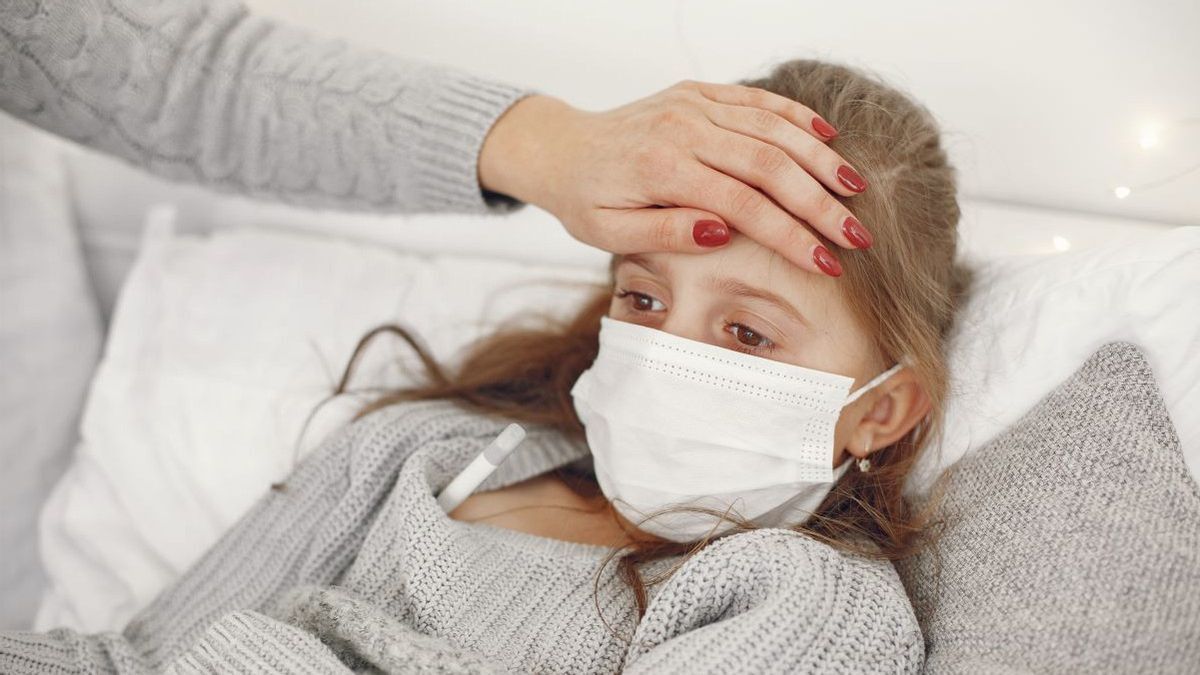Singapura flu and chickenpox look similar at first glance, sometimes even difficult to distinguish. This happens because these two diseases both cause fever and rash, even though they are caused by different viruses. What are the differences between Singapore and smallpox flu?
Quoted from Healthy, Singapore flu and chickenpox disease are vulnerable to children. Even so, it does not mean that adults are not at risk of experiencing these two diseases.
The Singapore flu was caused by a Coxsackievirus A16 infection, while the waterpox was caused by the Varicella-zoster virus.
The incubation period is the time between being exposed to the virus and the emergence of early symptoms of the disease. Singaporean flu has a shorter incubation period, which is 3-6 days, while chickenpox can take 10-21 days.
Early symptoms of these two diseases can be said to be similar, namely fever, sore throat, stomach pain, vomiting, and diarrhea. However, the difference can be seen from the appearance of a rash. Ruam due to the Singapore flu in the form of red spots is often accompanied by lephahan that appears on the palms of the hands, feet, mouth, and buttocks, as well as sariawan in the mouth or red spots around the lips. Meanwhile, rashes and overflows on the skin due to waterpox are in the form of spots containing liquids that are easily broken and feel itchy, usually starting from the chest, back, and face, then spreading throughout the body.
In addition to rashes, people with Singapore flu also experience other typical symptoms such as sore throats, circumvents in the mouth, and diarrhea. On the other hand, smallpox sufferers usually do not experience filtering, but are accompanied by symptoms such as colds, headaches, and the body feels weak.
In general, to reduce symptoms due to Singapore flu and smallpox, several things can be done are as follows:
Singapura Flu is also known as Hand Foot Mouth Disease. The virus that causes Singapore flu can live in throat fluids, nasal fluids, saliva, feces, and fluids found in skin rashes. Singapore flu is a disease that is very easily transmitted.
Singapura flu transmission can occur when people are in contact with healthy people or vice versa. In addition, items contaminated with impeding body fluids that contain the virus increase the risk of transmission so that it is very good to quarantine persons with Singapore flu so that transmission does not occur easily.
Singapore flu is one of the diseases that can be treated by self-care at home. Singapore's flu often recovers about 7-10 days after the person exposed to the Singapore flu virus.
SEE ALSO:
There are several treatments that can be done to treat Singapore flu, such as using hot-reducing drugs if you have a fever, meeting the need for rest, consuming lots of water, avoiding eating spicy and acid foods, and eating foods that have a soft texture.
The chickenpox is also known as the disease of variella. Waterpox that is not treated properly can cause various complications in people with chickenpox that have a low immune system.
The Varicella Zoster virus is easily spread through saliva when a cough or sneezing and a liquid originating from a rash on the skin. Therefore, people with waterpox are advised to self-quarantine to avoid transmission that can occur. Transmission occurs a few days before a rash appears on the skin.
That's a review of the differences in Singapore flu and chickenpox. By knowing it, it is hoped that it will no longer be wrong in distinguishing these two diseases. If symptoms begin to appear, immediately check with a therapist or a doctor to get the right treatment and according to the cause to get the right treatment. Visit VOI.id to get other interesting information.
The English, Chinese, Japanese, Arabic, and French versions are automatically generated by the AI. So there may still be inaccuracies in translating, please always see Indonesian as our main language. (system supported by DigitalSiber.id)


















